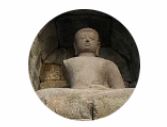Apparel giant The Gap Inc (NYSE: GPS) will become the first major US retailer to source garments produced in Myanmar after the easing of sanctions. However, the company is not investing directly in Myanmar as it will be sourcing from factories owned by a South Korean company that has a long-standing business relationship with in other markets.
The company placed an order earlier this year for outerwear to be made at two factories in Yangon. The jackets and vests, which are for the company’s Old Navy and Banana Republic Factory brands, will be shipped to the United States this month and will be available for sale in Gap owned stores later this summer. The order has contributed to the hiring of 700 additional employees at one factory, bringing the total number of workers to around 2000 at each site.
It should be mentioned that back in 2000, more than half of the apparel produced in Myanmar made its way to the US followed by the EU with garments generating around US$829 million in export earnings. Sanctions and concerns over human rights or labor violations eliminated exports to the US albeit the EU did not impose a blanket ban (but most buyers were scared off by reputational risk associated with the country.
The Myanmar Times quoted U Aung Win, the vice chair of the Myanmar Garment Manufacturers Association (MGMA), as saying that garment workers in Myanmar make between US$75 and $150 a month. He also added that foreign factories pay slightly higher wages on average than local ones.
In addition, 2013 export revenues hit nearly $1 billion according to MGMA and employment in the industry has jumped from 80,000 people to 250,000 over the past three to four years. The number of garment factories in Myanmar has also grown to more than 200 – up from 181 in November 2012.
To read the whole article, ‘Made in Myanmar’ to hit US shelves, go to the website of the Myanmar Times.
Similar Posts:
- Myanmar: Where a SIM Card Price Went From $2,000 to $1.50 (BloombergBusinessweek)
- Myanmar: A Long Term Growth Story (AFC Asia Frontier Fund)
- Meet Myanmar’s New Rich One Percent (WSJ)
- Myanmar: Unmet Potential (Asia Frontier Capital)
- The Road to Mandalay Becomes More Vital – To China (FT)
- Who Leads in Southeast Asia in Digital Payment Adoption? (The Asset)
- The Spoils of Trade War: Asia’s Winners and Losers in US-China Clash (SCMP)
- Minimum Wage Politicking Stings Employers in Southeast Asia (Nikkei Asian Review)
- Frontier Market ETFs Have 72% Exposure to Oil-Dependent Countries (FT Adviser)
- 8 of 10 Fastest Growing Markets are Frontier Markets (Mobius Blog)
- The Great ASEAN Economic Rebound (Murray Hunter Substack)
- The Rise and Rise of Bangladesh (Nikkei Asian Review)
- Nigeria, Argentina and Vietnam Top the Frontier Markets Sentiment Index (WSJ)
- Vietnam’s Economy is Firing on All Cylinders (Eaton Vance)
- Karex Bhd: The World’s Biggest Condom Maker (NST)
